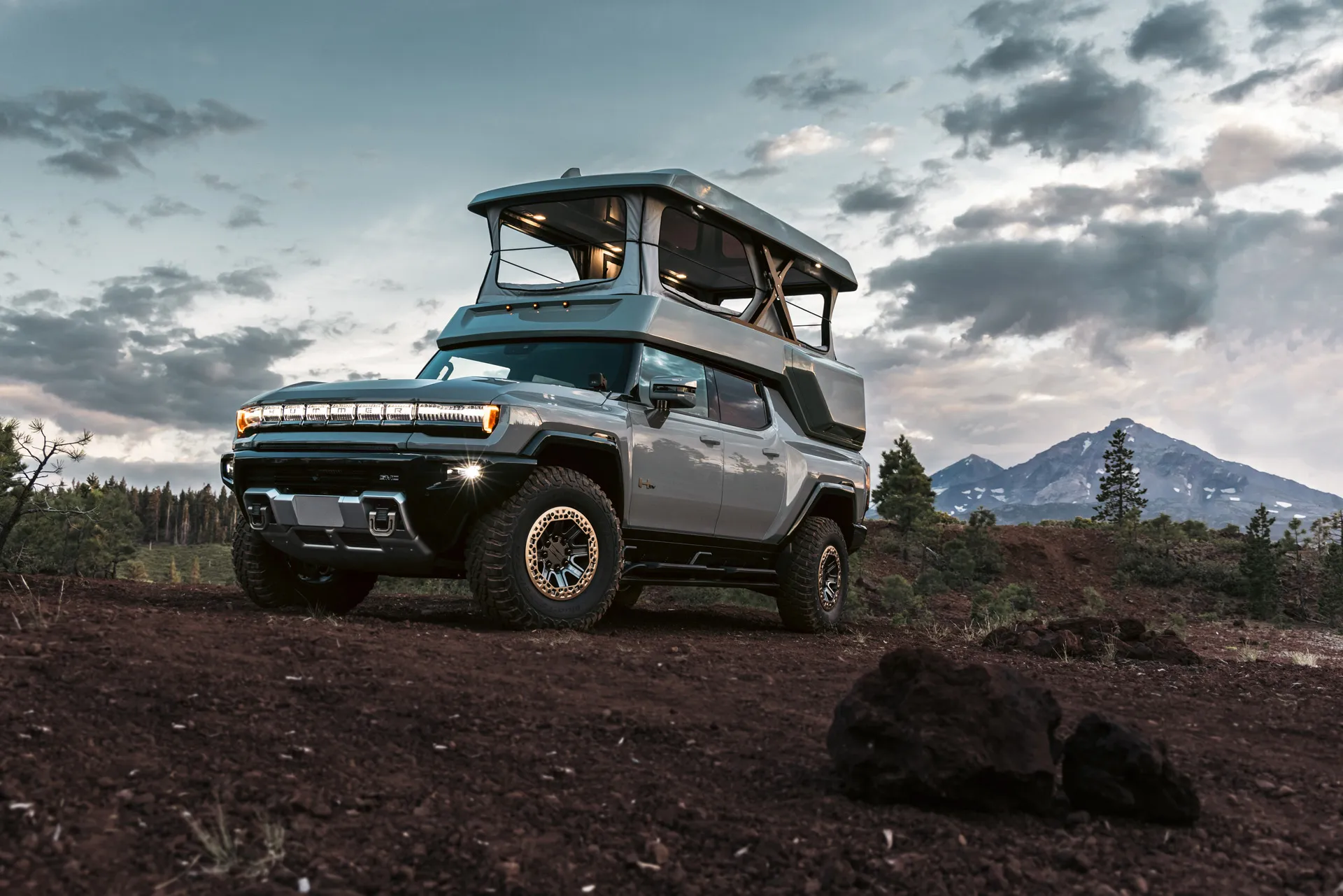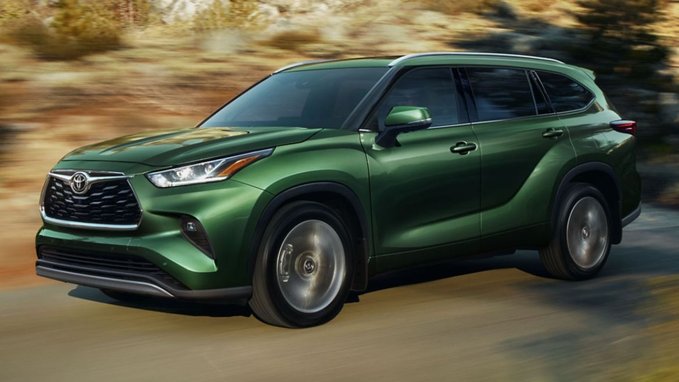What Can I Tow With My Vehicle? Complete Guide for Towing
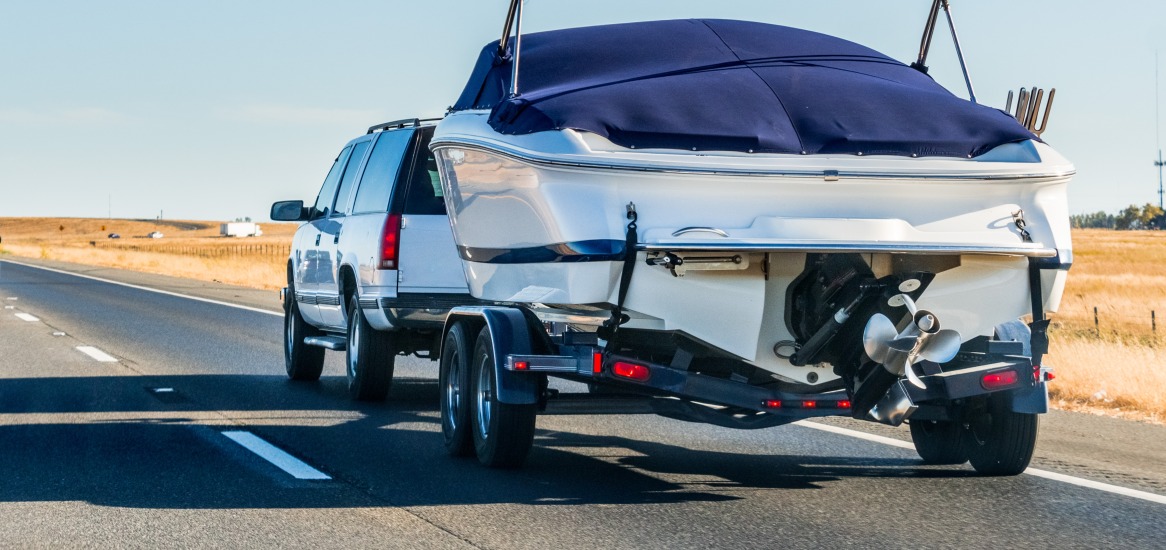
Towing capacity is the maximum weight a vehicle can safely tow with a trailer. One should never do more than a manufacturer’s recommended maximum weight as outlined in each vehicle’s owner’s manual or towing guide. Not every vehicle is even rated for towing, which is another important detail that should be outlined.
Even though manufacturers set each vehicle’s towing capacity, it’s still only an estimate of the maximum weight of the trailer that is being hauled under ideal conditions. Maximum towing capacity can change depending on what kind of trailer is being used, how the trailer is loaded, and the circumstances surrounding safe driving conditions at the time.
In our towing guide, we will outline some important terms, talk about some of the different types of towing, and look at some popular vehicles used for towing and their towing capabilities.
Payload vs. Towing Capacity
As previously mentioned, towing capacity is the estimated maximum safe weight a vehicle can tow. This would include both the weight of the trailer being pulled and the cargo weight put on the trailer. If the weight on the trailer is unevenly distributed, the vehicle’s max towing capacity would decrease as the safety factor surrounding the situation also decreases.
Your particular vehicle’s max towing capacity, if it has one, will be outlined in your owner’s manual or manufacturer’s towing capacity guide. Towing capacity is set by the manufacturer as a safe estimate of how much your vehicle can tow safely under normal circumstances.
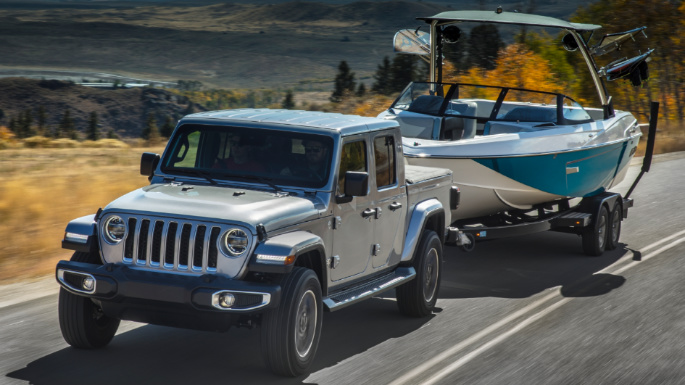
Payload capacity differs from towing capacity in that payload capacity is the maximum amount of weight that your vehicle can haul. The payload can involve pulling a trailer but is most often referenced when referring to the weight limit of a pickup truck bed. Every vehicle has a maximum payload capacity, even if it is not often discussed.
Passenger weight, trailer tongue weight, and cargo weight combined make up payload capacity. If you open the driver’s side door of your vehicle, you should see a sticker on the door jamb. This sticker will often have fuel type, tire size, seating capacity, and payload capacity outlined. You can also find your vehicle’s payload capacity rating in the owner’s manual.
Terms to Know for Towing & Hauling:
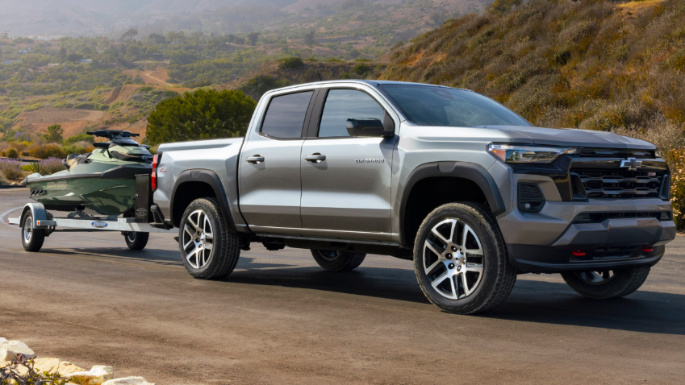
Before going any further, it is important to define some additional terms as they are important in determining how much you can tow, how various types of weight ratings affect your vehicle, and how they affect towing capabilities.
Dry Weight:
A vehicle’s dry weight is the total weight of the vehicle without any of its necessary fluids like engine oil, gasoline, transmission fluid, and coolant.
Curb Weight:
Curb weight is the total weight of a vehicle with all of the necessary fluids added to the equation. In other words, curb weight is dry weight plus the oil, gasoline, and coolant added to the vehicle, just like you would get it from the dealership. Along with towing capacity, curb weight is often the most commonly listed specification when researching vehicle specs related to weight.
Payload Capacity:
Payload capacity is the maximum amount of weight that a vehicle can hold before it becomes unsafe. Pickup trucks often advertise their payload capacity, but even cars, SUVs, and minivans have payload ratings. Not only does the payload include passenger and cargo weight, but it also includes the tongue weight of a trailer if you were to be pulling one.
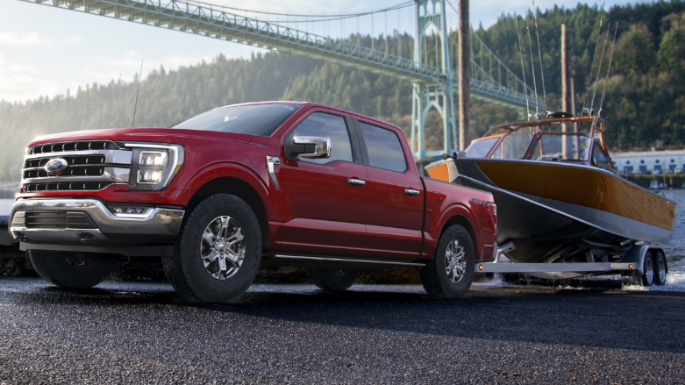
Gross Vehicle Weight Rating (GVWR):
Gross vehicle weight rating, or GVWR, can be thought of as a combination of curb weight and payload. GVWR is the maximum weight that your vehicle can possibly be and still operate safely.
Gross Combined Weight Rating (GCWR):
Gross combined weight rating, or GCWR, is a vehicle’s gross vehicle weight rating plus the weight of a trailer attached. Again, this is a rating set by each manufacturer to demonstrate the maximum amount of weight a vehicle can carry while also towing a trailer.
Gross Axle Weight Rating (GAWR):
Gross axle weight rating, or GAWR, is similar to GCWR, but it is broken down to how much weight the front and rear axle of your vehicle can safely handle.
You can think of GAWR like rocks on a scale. If all the rocks are moved to one side of a scale, the scale will be unbalanced. Likewise, if all the weight of a vehicle is sitting over the front or rear axles, the vehicle will be unbalanced, and the excess weight over one side could damage the suspension and axles.
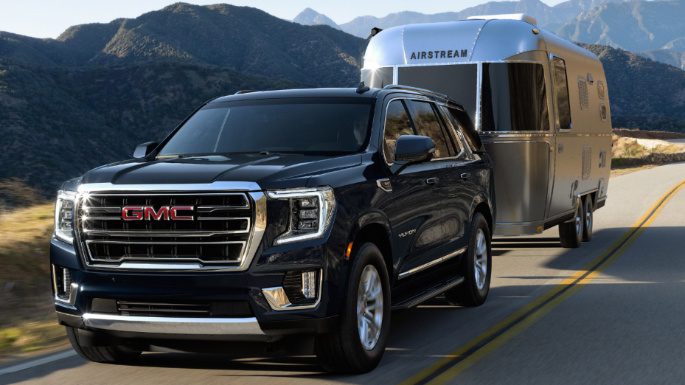
Gross Trailer Weight (GTW):
Gross trailer weight, or GTW, is the total weight of the trailer itself and its cargo. Like a vehicle, a trailer might also have a gross vehicle weight rating to set its maximum safe weight, but gross trailer weight is a measured weight rather than a safe weight limit.
Tongue Weight (TW):
Tongue weight is the weight exerted on a tow vehicle at the point of the trailer’s connection to it. Trailers should always be balanced when they are loaded. If the tongue weight is too low or too high, either the trailer, tow vehicle, or both will become unbalanced, potentially causing an accident.
Tips for Weight Management:
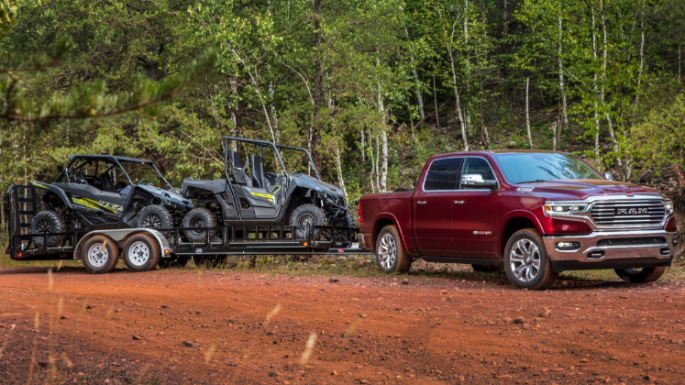
Now that we have thoroughly bogged down your brain with a bunch of acronyms and terms relating to both vehicle and trailer weight, we have to move on and talk more specifically about trailer weight management.
Balance:
The first aspect of trailer weight management is balance. When loading a trailer, it is not ideal if 90% of the weight is over the front of the trailer and only 10% is over the rear. Not only will this affect the tongue weight of the trailer, which could also affect the tow vehicle’s receiver, but with this much of an imbalance, the trailer could unsafely sway while driving.
Likewise, if 90% of the trailer’s weight is in the rear, the same imbalance can occur. Not every trailer will always be loaded with a 50/50 weight distribution to the point that the trailer’s tongue can be suspended in the air without the use of its foot. However, a trailer should have its weight evenly distributed over the length of its body to prevent imbalances while driving.
Weight distribution:
Even when trailers are loaded properly and balanced, the sheer weight of whatever is being towed can have an effect on the tow vehicle. The larger and heavier a trailer is, the more profound an effect a trailer will have on its tow vehicle. This is where weight distribution comes in handy.
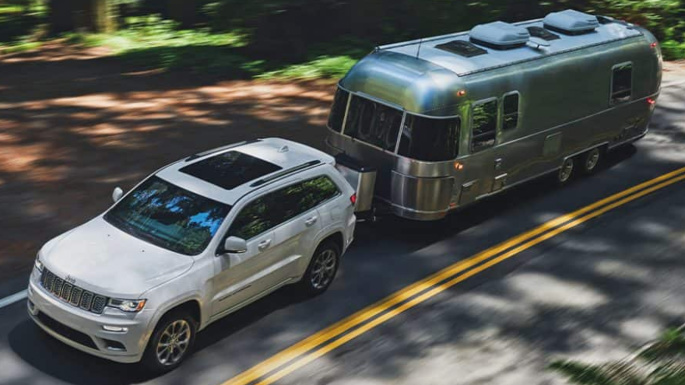
A weight distribution hitch can be used with most trailers, but it becomes especially important if your trailer’s weight is 50% or more of your tow vehicle’s weight. A weight distribution hitch adds even more balance to a heavy trailer to prevent its weight from “bullying” the tow vehicle, especially when the item being towed is heavy.
Wind especially can have a profound effect on trailer sway. Weight distribution hitches can help, but sway systems can prevent excess trailer sway to an even greater degree. Weight distribution and sway systems are designed to distribute trailer weight over both the front and rear axles of a tow vehicle more than would a trailer without a distribution or sway system.
Types of Trailer Hitches and Towing:
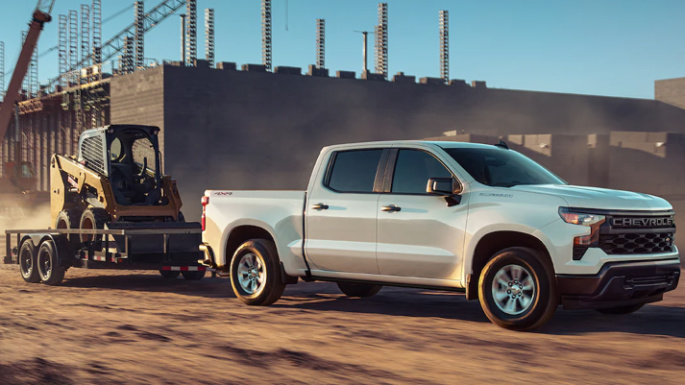
With all of the vehicle and trailer weight ratings and terms out of the way, it is time to talk about how the tow vehicle and trailer are connected. There are five common types of towing, all of which require different hitching methods.
Trailer Towing:
Basic trailer towing is the most common form of towing you will most likely see and probably the most common type of towing that people think of when picturing towing. This type of towing requires a receiver hitch and a ball mount attached to the tow vehicle as well as a trailer coupler to hook to the ball.
There are five classes of trailer hitches used for trailer towing. The higher the class, the higher the tow rating will be and the more a vehicle will be able to tow.
Class I:
Class one hitches feature the lowest GTW rating of all the classes. They can usually handle up to 2,000 pounds GTW and up to 200 pounds TW, but not all are rated for that much weight. Most feature a 1.25-inch receiver tube. They are most commonly used on cars and small crossover SUVs.
Class I:Class II:
Class two hitches are commonly found on larger cars, midsize crossovers, and some minivans. They can be rated as high as 3,500 pounds GTW and 350 pounds TW, but again, the exact ratings of a class II hitch can be less. They typically come with a 1.25 to 2-inch receiver tube.
Class III:
Class three hitches are often found on pickup trucks, larger crossover SUVs, and some minivans. A 2-inch receiver tube is typical for a class III hitch, usually with up to 8,000 pounds GTW rating and 800 pounds TW rating. Many stock pickup truck tow packages include a Class III hitch.
Class IV:
Class four hitches are typically found on full-size trucks and SUVs. They are usually rated at up to 10,000 pounds GTW and 1,200 pounds TW with a 2-inch receiver tube.
Class V:
Class five hitches are the most capable tow hitch setups available. You can frequently find them on super-duty pickup trucks designed to carry the heaviest loads that a trailer is capable of pulling. They can withstand up to 20,000 pounds GTW, and up to 2,700 pounds TW, and usually come with a 2.25-inch receiver tube.
Dinghy Towing:
Dinghy towing is also known as flat towing. This type of towing is used frequently to tow vehicles behind RVs and sometimes when towing vehicles behind tow trucks or pickup trucks. Drivetrain items must be safely disconnected or disabled in order to flat tow without damaging a vehicle’s components.
A trailer hitch is used in dinghy towing along with a tow bar, safety chain, and wiring harness to safely keep the towed vehicle in line with the tow vehicle and prevent it from becoming disconnected.
Fifth-Wheel Towing:
Fifth-wheel towing involves mounting kingpin jaws into the bed of a pickup truck. Kingpin jaws are used by big rigs to connect and haul their own trailers, which utilize a kingpin. The kingpin jaws lock the kingpin in place once the connection has been made.
This type of towing is a heavy-duty form of towing typically utilized when pulling large campers. Their capacity ranges from 15,000 to 30,000 pounds.
Gooseneck Towing:
Gooseneck towing is similar to Fifth-wheel towing in that a hitch connection is installed into a truck bed. Rather than jaws, though, a hitch ball is used, making this form of towing much less intrusive and easier to handle than mounted kingpin jaws assemblies. Gooseneck towing is usually rated for up to 30,000 pounds of weight.
Both Fifth-wheel and gooseneck towing often go hand-in-hand with heavy-duty dual pickup trucks, but gooseneck towing is frequently used with flatbed and livestock trailers in addition to large campers.
Pintle Towing:
Pintle towing is another form of heavy-duty towing, but rather than using a typical ball hitch or kingpin jaws, a locking hook and ring are utilized to form the connection between the tow vehicle and trailer.
Pintle hitches can typically handle up to 60,000 pounds of weight. Farm tractors, dump trucks, and other forms of heavy-duty industrial equipment utilize pintle setups as they require the most amount of towing capacity under the harshest conditions.
Choosing the Right Trailer:
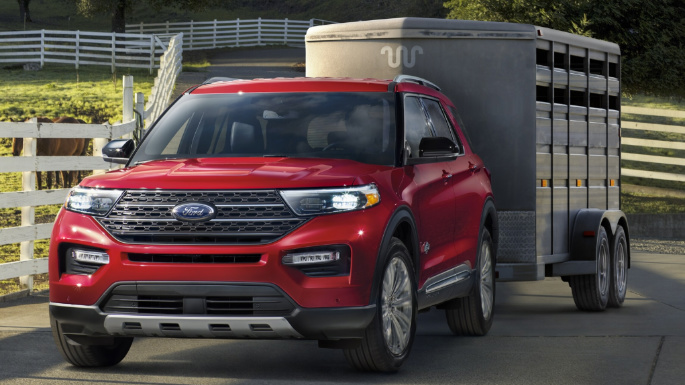
Now it is time to choose a trailer. You must ask yourself a few questions to deduce which option is best for you. What will you be using it for? How much do I have to spend? What is my tow vehicle built to handle? Answering these questions will at least help you start your journey to finding the correct trailer for your needs.
Utility Trailers:
Utility trailers are one of the more common types of trailers. They are also one of the most versatile, they come in many different sizes, and they can be some of the most affordable options on the market. They can be small enough to be towed by cars, but they can also be sturdy enough to haul several thousand pounds of cargo.
The smallest utility trailers can cost under $1,000 with a capacity of 1,000 pounds or less. They can also be large enough to haul up to 7,000 pounds and cost more than $4,000.
Enclosed Trailers:
Enclosed trailers are completely enclosed on all sides. They are commonly used to haul things like ATVs, motorcycles, vehicle equipment, or other valuables. Because of this, they can be much more expensive than utility trailers. The larger the weight limits on the trailer, the more expensive it will be. They can cost well over $10,000 for the largest capacities.
Equipment Trailers:
Equipment trailers are like beefed-up utility trailers. They are also typically larger and built with sturdier materials, allowing them to haul up to 15,000 pounds of cargo. These can be frequently seen behind dump trucks towing skid loaders and bulldozers. Small ones can cost as little as $5,000, but large ones can cost over $8,000.
Car Trailers:
There are two different types of car trailers available. The first of which is similar to an equipment trailer, but it is built with less hauling capacity and is more suited for hauling smaller cars than heavy machinery. Small ones can cost as little as $3,000 while larger double-car haulers can cost closer to $10,000.
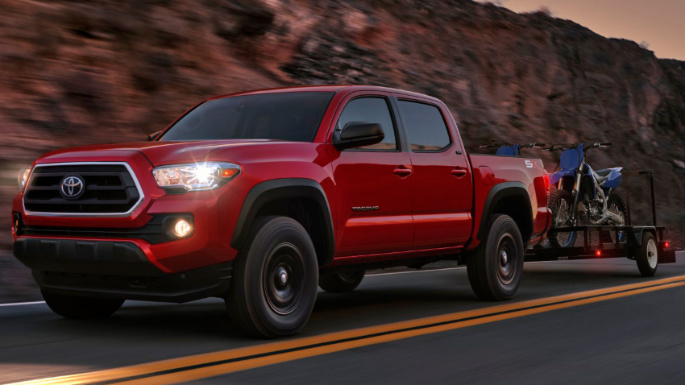
The second type of car trailer is a tow dolly. This trailer is essentially a coupler hook with two wheels and two plates upon which two wheels of a towed vehicle sit. It is one of the most basic and cheapest trailer types you can get. They can cost as little as $1,000 or as much as $2,000.
Dump Trailers:
Dump trailers are built for hauling material that would otherwise fall out of an unenclosed trailer like dirt, stone, or sand. As such, they usually have four enclosed sides, an open top, and a hydraulic lift.
They can haul literally tons of material, but that also makes them expensive. They can range from $8,000 to more than $13,000 for larger ones.
Gooseneck Trailers:
We have already discussed gooseneck towing, and the gooseneck trailer is built for a trailer with a gooseneck setup. Gooseneck trailers are often combined into other trailer types like car trailers, equipment trailers, campers, or dump trailers.
They are some of the more expensive types of trailers you can buy as their max payload is often much higher than regular ball and hitch trailers of the same type. They can be as cheap as $7,000 or as much as $12,000 or more.
Specific Purpose Trailers:
Even though the trailers mentioned above are built for a specific purpose, many can be used for other things beyond the things for which they are built. Purpose-built trailers like boat trailers, livestock trailers, and campers can only really be used for one thing. Naturally, they will vary in size, weight, and price, depending on what you get.
How Does Torque Work for Hauling?
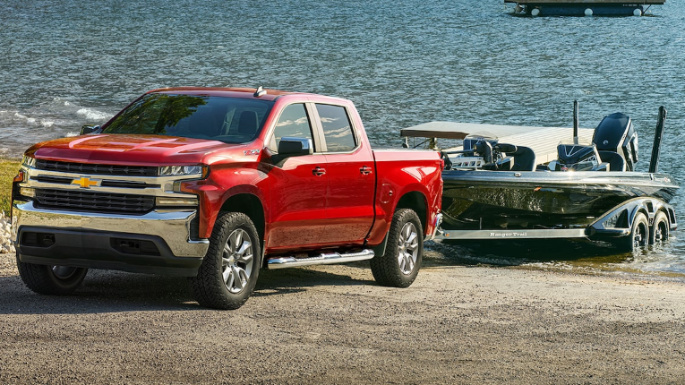
When you shop for a car, one of the things that the salesperson likely flaunts is the horsepower of the vehicle in which you are interested. For most vehicles on the road, horsepower is more important than torque. For towing, though, torque is likely the number you want to know. This is because there is a big difference between horsepower and torque.
In simple terms, horsepower is the ability of an engine to do work. It is a measure of how fast an engine is able to spin. Torque is the ability of the vehicle’s engine to perform that work. The presence of torque is one reason why muscle cars can smoke their tires with a blip of the throttle, and the absence of torque is why old Honda engines have to be revved so high to get them going.
The 2023 Chevrolet Corvette is a good example of horsepower and torque. The base model has a V8 engine that produces 490 horsepower at 6,450 RPM and 460 lb-ft of torque at 5,150 RPM. Those are both healthy figures but consider the 2023 Chevrolet Tahoe. It is available with a 277-horsepower turbo-diesel engine that produces the same amount of torque at a much lower RPM.
Apart from the fact that the Chevy Corvette is a borderline supercar and the Tahoe is a big SUV, both vehicles have the same amount of torque while the Tahoe has over 300 less horsepower. The Tahoe can tow over 8,000 pounds because its maximum torque comes in at a much lower RPM than the Corvette’s, giving it the ability to tow so much more, despite its comparative lack of horsepower.
Diesel engines are usually prized over regular gasoline engines for towing because diesel engines are capable of making much more torque at much lower RPMs than most gasoline engines. You can certainly tow with a smaller gasoline engine, but if it lacks the necessary torque to use its power, the result will a be lower towing capacity.
What Can I Tow with 1,000 Pounds of Capacity?
Vehicles with a 1,000-pound towing capacity will likely be the smallest cars and crossovers, many of which may not even have a factory towing package option. Aluminum boat trailers ranging from 12 to 20 feet in length, fiberglass boat trailers ranging from 10 to 22 feet, and small, 8 to 10-foot single-axle utility trailers are all usually fair game.
22-foot fiberglass boat trailers can weigh up to 570 pounds. 20-foot aluminum boat trailers and 10-foot utility trailers usually weigh 200 pounds less than that.
What Can I Tow with 1,500 Pounds of Capacity?
A 1,500-pound towing capacity is fairly standard for base-model compact crossovers like the Toyota RAV4 or Honda CR-V. You can up your trailer game by towing a 12, 16, or 20-foot tandem-axle utility trailer, but be cautious because a 20-foot utility trailer will come close to these vehicles’ max towing capacity.
What Can I Tow with 2,000 Pounds of Capacity?
Not all compact crossovers can tow as little as the least capable RAV4 and CR-V models. The Hyundai Tucson can tow up to 2,000 pounds across all of its trim levels. Several midsize SUVs like the Kia Sorento and Volkswagen Atlas start at the 2,000-pound mark but can tow more than that when properly equipped.
At around 1,800 pounds, all of these models could pull a horse trailer with a single horse or a larger tandem-axle utility trailer than in our last entry.
What Can I Tow with 3,500 Pounds of Capacity?
If you have a 17-foot camper or a two-horse horse trailer, you will likely be able to pull them with a Mazda CX-9, a Toyota Sienna minivan, or another comparable vehicle. If you had a pickup truck, you could even pull a 16-foot livestock trailer with a gooseneck. 3,500 pounds is a fairly typical towing capacity of a strong compact crossover, a base model midsize crossover, or a small pickup truck.
What Can I Tow with 4,000 Pounds of Capacity?
There are few vehicles with a specific 4,000-pound towing capacity, but if you have a Jeep Gladiator, you could pull a 20-foot gooseneck livestock trailer and be right at or just under your weight limit.
What Can I Tow with 5,000 Pounds of Capacity?
A 5,000-pound maximum towing capacity is fairly common in the midsize crossover segment as well as the small truck segment, depending on the trim level. Campers ranging from 20 to 30 feet, a 20-foot toy hauler, and a four-horse horse trailer all fall within the limits here.
What Can I Tow with More than 5,000 Pounds of Capacity?
Naturally, anything that you can think of that would be larger and heavier than those things you can haul with a 5,000-pound max towing capacity is fair game here. Without venturing into the commercial vehicle realm, most properly equipped midsize, half-ton and one-ton pickup trucks can haul over 5,000 pounds.
28 to 37-foot toy haulers can weigh between 6,600 and 12,000 pounds, a 28-foot livestock trailer with a gooseneck setup will likely weigh around 5,000 pounds, and 26 to 35-foot fifth-wheel trailers generally weigh between 5,900 and 10,200 pounds.
Max Towing Capacity of Popular Pickup Trucks
Pickup trucks are popular in the United States, even if they will never be used for towing anything. Despite that, they are the best vehicles for most towing jobs. Here are some of the most popular models, their payload capacities, and their max towing capacities.
Toyota Tacoma – Payload: 1,120-1,620 lbs./Towing Capacity: 3,500-6,800 lbs
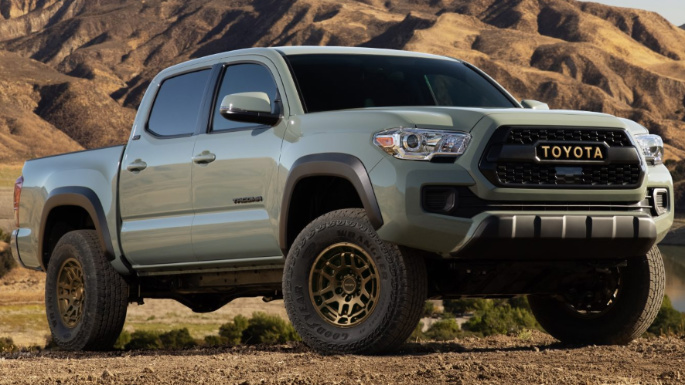
In the Toyota Tacoma’s base form, with its standard rear-wheel drive drivetrain, and its 159-horsepower base engine, it can tow 3,500 pounds. To get the most out of its towing capability, you will have to upgrade to its available 278-horsepower 3.5-liter V6 with a rear-wheel drive layout and access cab. This setup is available on the SR, SR5, and TRD Sport trim levels.
Nissan Frontier – Payload: 1,316-1,876 lbs./Towing Capacity: 6,250-6,750 lbs
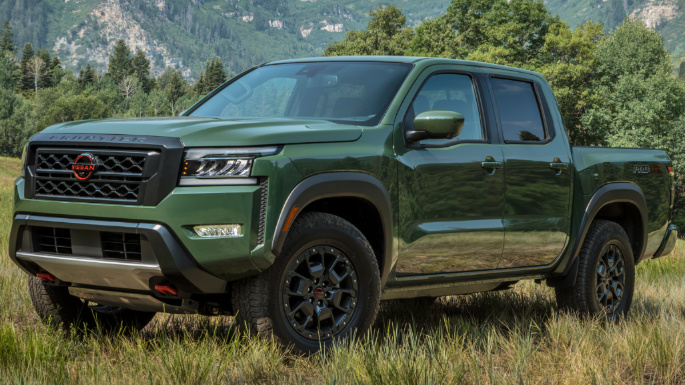
Unlike the Tacoma, the Nissan Frontier offers quite good towing capacity, regardless of the trim level that you select. Also unlike the Tacoma, the Frontier’s base trim level also provides the best towing capacity. All Frontier models come with the same 310-horsepower V6 engine. It also makes 281 lb-ft of torque.
Even though it does not have the highest maximum towing capacity in the class, it does have the highest payload capacity in the midsize pickup truck segment.
Chevrolet Colorado – Payload: 1,285-1,550 lbs./Towing Capacity: 3,500-7,700 lbs.
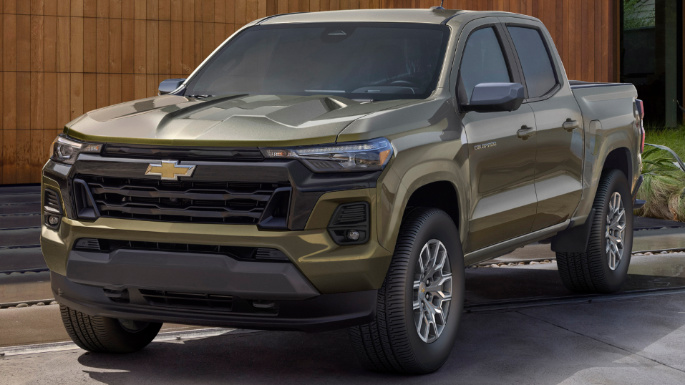
The Chevrolet Colorado splits the honor of having the least amount of bottom-end towing capacity on our list with the Toyota Tacoma. On the other side of the spectrum, its maximum towing capacity is the highest in the midsize pickup truck segment. To unlock it, you can choose just about any trim level you want, but you will need to equip the optional Trailering Package.
The Colorado ZR2 trim level is the only Colorado model that only achieves a maximum of 6,000 pounds of towing capacity. Additionally, despite its towing prowess, it cannot reach the same max payload limit as either the Frontier or Tacoma.
Jeep Gladiator – Payload: 1,080-1,200 lbs./Towing Capacity: 4,000-7,650 lbs
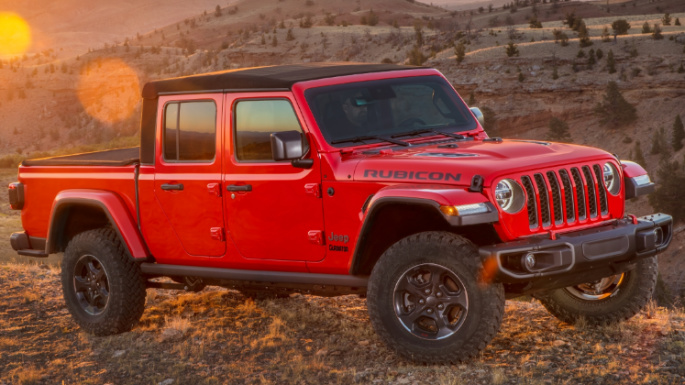
The Jeep Gladiator’s max payload capacity pales in comparison to other midsize trucks on our list, but it does quite well in the towing department, despite its standard 4WD drivetrain. Sport, Sport S, and Freedom trim levels offer the highest towing capability, all of which are equipped with a 3.6-liter V6 engine that produces 285 horsepower and 260 lb-ft of torque.
Ford F-150 – Payload: 1,745-2,238 lbs./Towing Capacity: 5,000-14,000 lbs
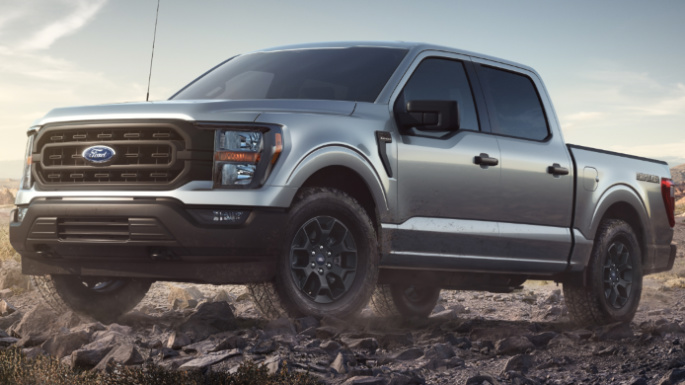
The Ford F-150 is not only the best-selling vehicle in America, but it is also the first full-size pickup truck on our list. It regularly trades blows with the Chevy Silverado for towing and payload superiority, and even though it trails the Silverado’s max payload rating, it has the Silverado squarely beat in the towing capacity war.
F-150 models with rear-wheel drive, a SuperCab or SuperCrew configuration, the max trailer tow package, and the twin-turbocharged 3.5-liter EcoBoost engine boast a towing capacity of 14,000 pounds. It helps that the engine produces 400 horsepower and 500 pounds of torque.
Ford F-250 – Payload: 2,462-4,323 lbs./Towing Capacity: 12,300-20,000 lbs
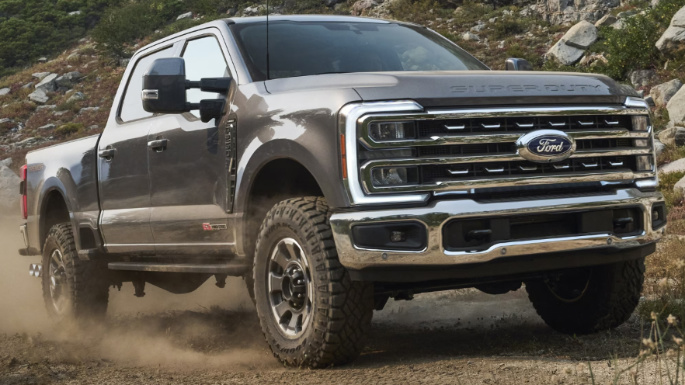
If you need even more towing power, you can go with the Ford F-250. Its maximum towing capacity comes with its available 6.7-liter turbo-diesel V8 engine and crew cab layout. Its payload also far exceeds the RAM 2500s.
RAM 1500 – Payload: 1,242-2,322 lbs./Towing Capacity: 6,150-12,560 lbs
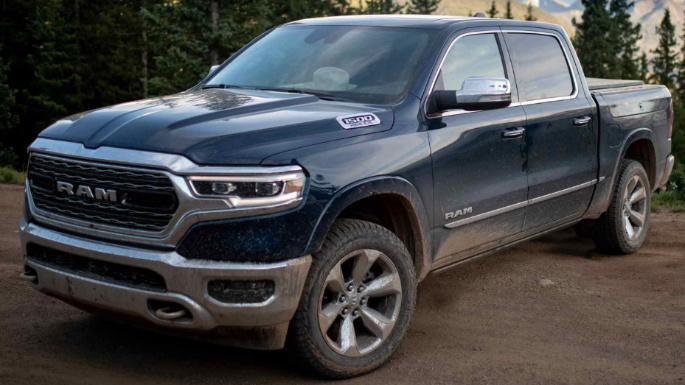
The RAM 1500 is another full-size pickup truck that usually gets a little lost behind the F-150 and Silverado. This is mostly because its max towing capacity is less than those of its chief rivals. Regardless, a RAM 1500 equipped with the optional 3.0-liter EcoDiesel engine is the one to get to unlock its maximum towing potential of 12,560 pounds.
RAM 2500 – Payload: 1,564-4,012 lbs./Towing Capacity: 10,520-19,780 lbs
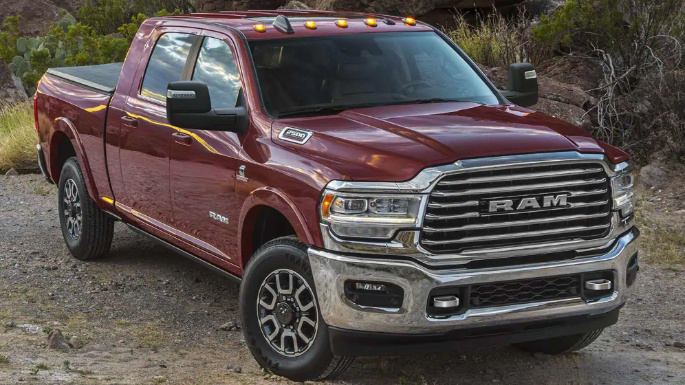
As with the Ford F-250, moving from the RAM 1500 to 2500 unlocks much more towing capability due to its heavy-duty design. The RAM 2500 with the most towing capacity comes with a 6.7-liter Cummins turbodiesel engine that produces a whopping 850 lb-ft of torque.
Chevrolet Silverado 1500 – Payload: 1,750-2,280 lbs./Towing Capacity: 7,200-13,300 lbs
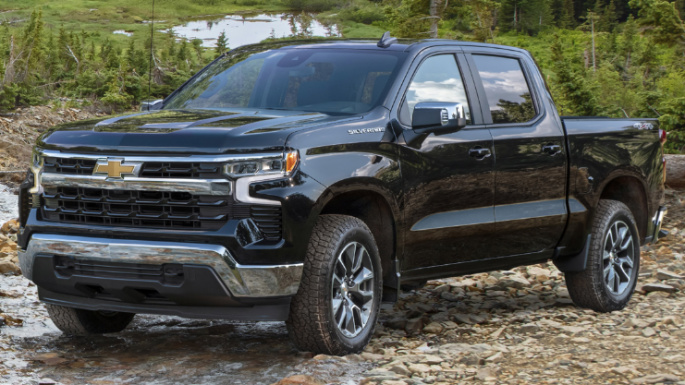
Falling slightly behind the Ford F-150 in terms of sales, the Silverado 1500 has the upper hand in the maximum payload. Unlike several other models on this list, however, there are two engines in the Silverado lineup that can unlock its maximum towing capacity.
If you choose the 420-horsepower 6.2-liter V8, you can get 13,300 pounds of max towing if you also equip the Max Trailering package with the standard bed and Double Cab configuration. Otherwise, you will get there with GM’s 277-horsepower 3.0-liter turbodiesel and rear-wheel drive layout. You can choose from a crew cab and a short truck bed or a double cab and a standard truck bed.
GMC Sierra 1500 – Payload: 1,570-2,280 lbs./Towing Capacity: 7,400-11,800 lbs
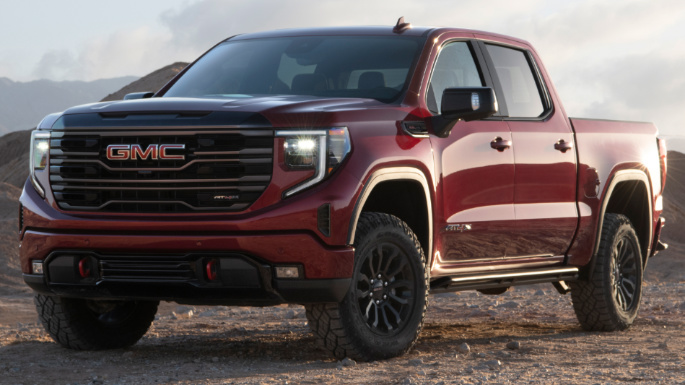
Even though the GMC Sierra 1500 is a little ritzier than the Silverado 1500, they share many of the same components, including their powertrain options. Their capacities are similar, though the Sierra 1500’s towing capacity is slightly lower.
Additionally, the only way to unlock its maximum trailer towing potential is to forgo the 6.2-liter V8 and choose the same 3.0-liter turbodiesel and drivetrain as the Silverado has.
Toyota Tundra – Payload: 1,520-1,730 lbs./Towing Capacity: 8,800-10,200 lbs
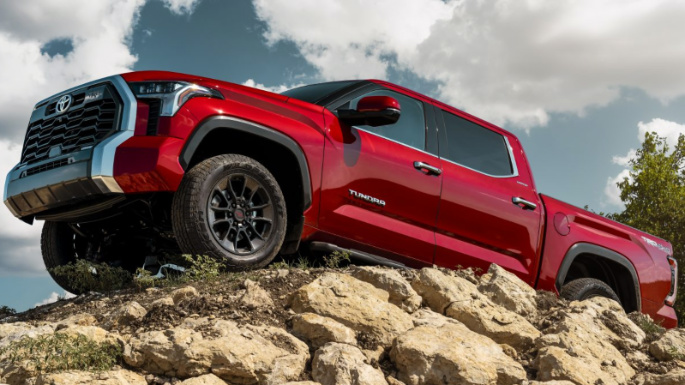
The Toyota Tundra is the underdog of full-size pickup trucks, even though it is certainly popular. Its payload is much lower than other options, and even though its max towing capacity is too, it is most likely adequate for average buyers.
In the same vein as its smaller Toyota Tacoma, SR5 models equipped with the standard RWD drivetrain, a double cab, and a 6.5-foot bed will give you the most towing grunt.
Max Towing Capacity of Popular SUVs
Pickup trucks are not the only vehicles that commonly tow trailers. SUVs and crossovers may not be able to tow fifth-wheels or goosenecks, but owners commonly tow utility trailers, campers, and even livestock trailers with them.
Jeep Wrangler – Towing Capacity: 2,000-3,500 lbs
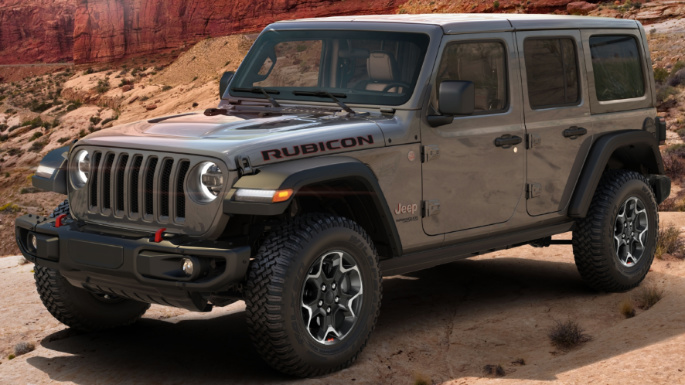
Despite its status as an off-road-capable body-on-frame SUV like the Chevy Tahoe, GMC Yukon, or Toyota Sequoia, it can only tow up to 3,500 pounds. To do that, you need to get a four-door version in any trim level. Four-wheel drive is standard on each model, so the drivetrain does not affect towing capability as it does in some pickup truck models.
Subaru Outback – Towing Capacity: 2,700-3,500 lbs
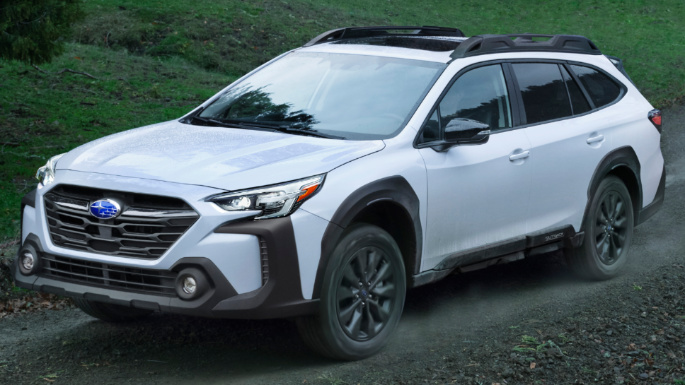
Famous for its Symmetrical AWD system, the Subaru Outback is known more for its ability to get you out of a snowy situation than to pull tons of weight. It can still get the job done, but you have to get the Wilderness trim level or one of the XT models to unlock its full potential.
Toyota Highlander – Towing Capacity: 3,500-5,000 lbs
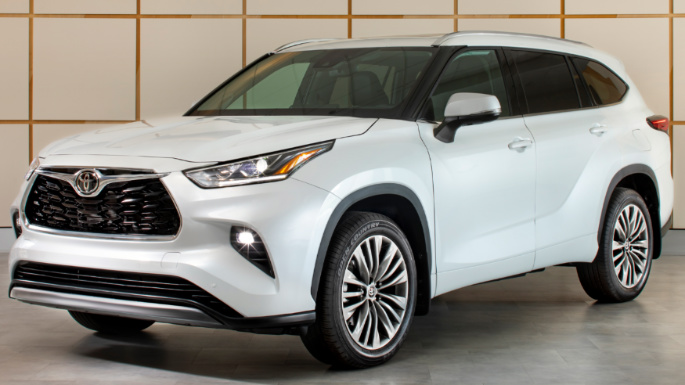
The Toyota Highlander is fairly typical of a midsize crossover when it comes to towing capacity. If you want to save on fuel and you choose the hybrid model, you will only be able to tow 3,500 pounds. If you choose a non-hybrid Highlander, you are in luck since each trim level, regardless of whether it is front or all-wheel drive, gives you the ability to tow up to 5,000 pounds.
Honda Pilot – Towing Capacity: 3,500-5,000 lbs
The Honda Pilot is another typical midsize crossover, but unlike the Highlander, it does not come with a hybrid option. Each model equipped with standard front-wheel drive is rated to tow 3,500 pounds. If you upgrade the drivetrain to AWD, you will benefit from 5,000 pounds of towing capacity.
Ford Explorer – Towing Capacity: 5,000-5,600 lbs
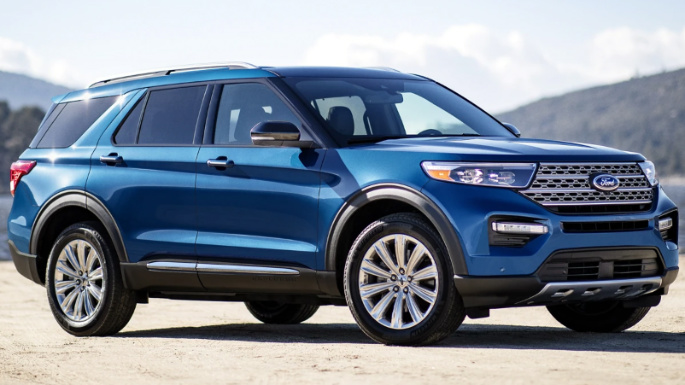
The Ford Explorer still falls within the midsize SUV segment, but it is more capable than most when it comes to towing. Similar to the Highlander, Explorer Hybrid models sit at the bottom of the towing food chain. They are still quite capable, but to reach all 5,600 pounds of towing potential, you will have to choose a model with the 400-horsepower twin-turbocharged V6 engine.
Jeep Grand Cherokee – Towing Capacity: 3,500-6,200 lbs
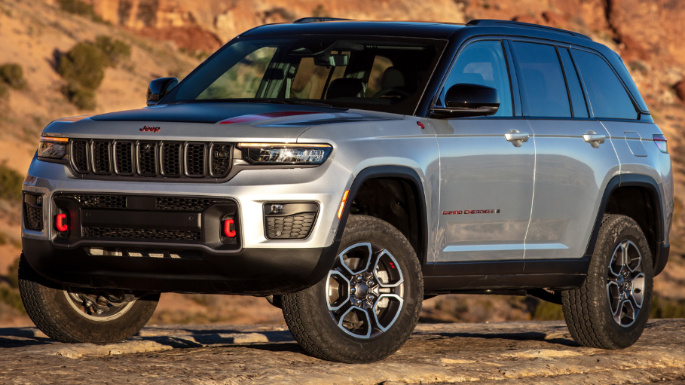
When it comes to midsize SUVs, the Jeep Grand Cherokee can out-tow all of them. Even though its low-end capacity comes in at 3,500 pounds, most models can tow 6,200 pounds. 2022’s Trailhawk model offered an optional high-performance V8 engine that boosted towing to 7,200 pounds, but for 2023, all Trailhawk models come as the plug-in hybrid 4xe.
GMC Yukon – Towing Capacity: 7,500-8,400 lbs
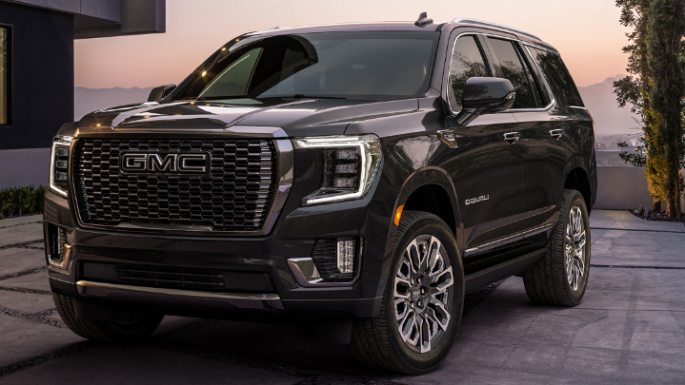
It may come as no surprise to you that the GMC Yukon shares the same powertrain options as the Chevy Silverado and GMC Sierra. Instead of the Duramax turbodiesel continuing to be the star of the show, though, the Yukon’s base 5.3-liter V8 engine with 355 horsepower and 383 lb-ft of torque is the powertrain that gets you the highest towing capability. Of course, you will need to add GM’s Max Trailering package to see its full potential.
https://www.autolist.com/guides/towing-capacity-guide What Can I Tow With My Vehicle? Complete Guide for Towing
